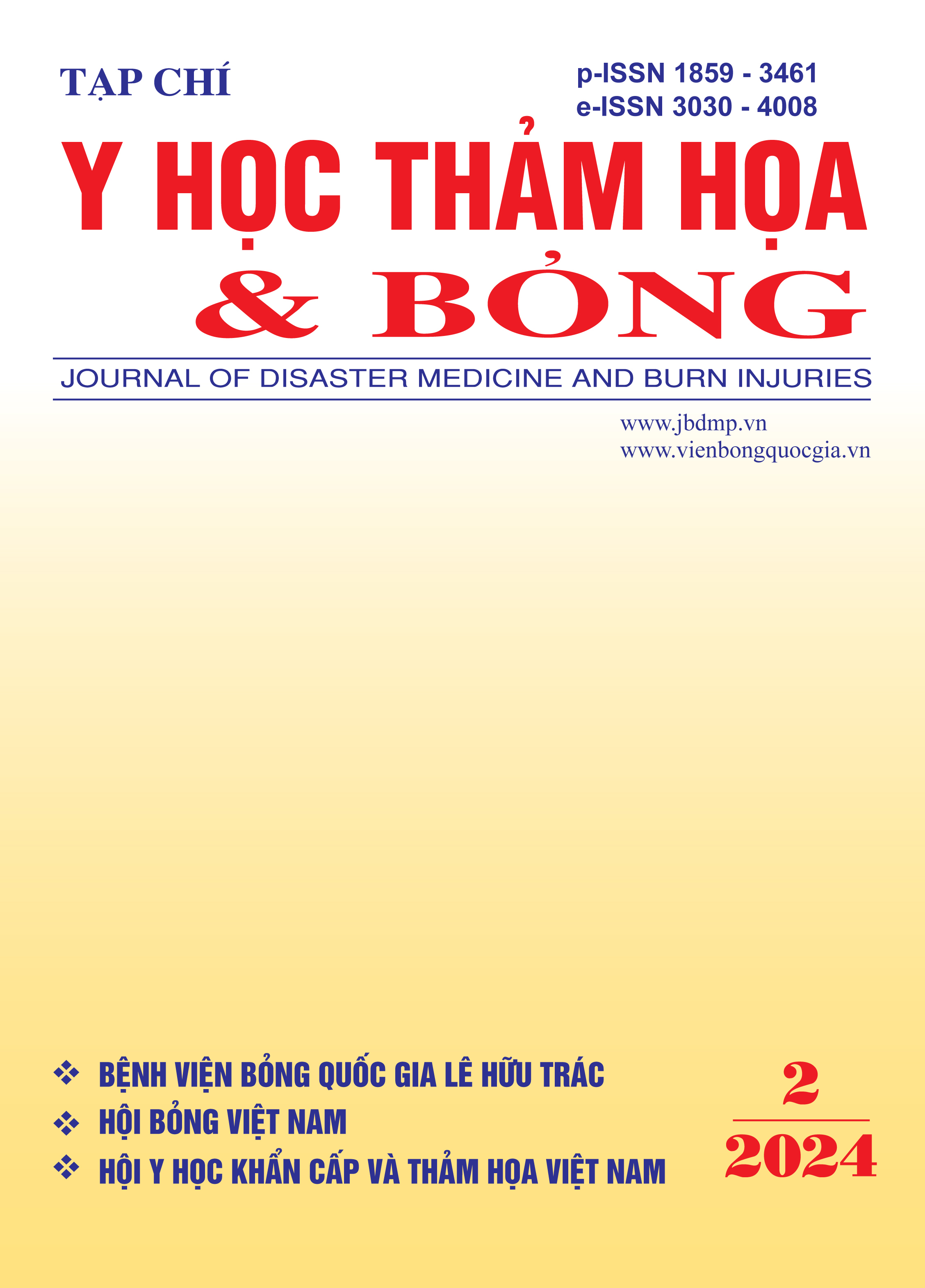Evaluating some clinical characteristics of sacral pressure ulcers and results of treatment with local flap transfer at the 4 Military Hospital
Main Article Content
Abstract
Objectives: Evaluating some clinical characteristics of sacral pressure ulcers and results of treatment with local flap transfer.
Subjects and methods: Study on 55 patients with stage III and IV sacral pressure ulcers, inpatient treatment at Military Hospital 4 from August 2018 to December 2022. Age ranged from 43 to 89 years old, average 67.71 years old, including 38 male patients, 17 female patients. Patients admitted to the hospital had some clinical and paraclinical characteristics identified. All patients underwent local flap surgery to treat pressure ulcers in the sacrococcygeal area. Monitor and evaluate results after surgery.
Results: 100% of patients at hospital admission had soft tissue necrosis, 63.63% of patients had sacral necrosis. Before flap surgery, 14 patients had soft tissue necrosis, 7 patients had sacral necrosis. There are 2 patients with postoperative bleeding, 2 patients with flap pedicle insertion due to posture and 2 patients with flap necrosis, local infection, and suture break.
Results after surgery < 6 months: Good 47 patients, average 8 patients. After surgery from 6 - 12 months: Good 43 patients, bad 1 patient. After surgery > 12 months: Good 35 patients, bad 1 patient.
Conclusion: Ulcers are common in people with many underlying diseases, developing in complicated ulcers. Randomized skin flaps to safely and effectively treat stage III and IV sacral pressure ulcers.
Article Details
Keywords
Sacral pressure ulcers, Military Hospital 4
References
2. Hai, H.L., et al., (2013). Quadrilobed superior gluteal artery perforator flap for sacrococcygeal defects.Chin Med J (Engl), 126(9): 1743-9.
3. NPUAP. (2007) Pressure ulcer stages revised by the National Pressure Ulcer Advisory Panel. Ostomy Wound Manage, 53(3): 30-1.
1. 4. . Nguyễn Văn Thanh (2018). Nghiên cứu vạt nhánh xuyên động mạch mông trên kết hợp hút áp lực âm trong điều trị loét mạn tính vùng cùng cụt. Luận án Tiến sỹ Y học. Học viện Quân y. Hà Nội.
4. Lin, C.T., et al., (2014). Modification of the superior gluteal artery perforator flap for reconstruction of sacral sores. J Plast Reconstr Aesthet Surg, 67(4): 526-32.
5. Pham, C., P., Middleton, and G. Maddern (2003). Vacuum-assisted closure for the management of wounds: an accelerated systematic review. Stepney, 2003: 53, SA: Australian Safety and Efficacy Register of New Interventional Procedures - Surgical (ASERNIP-S).
6. Trần Ngọc Diệp, Chu Anh Tuấn (2013). “Nghiên cứu tác dụng của trị liệu áp lực âm trong điều trị vết thương mạn tính” Tạp chí Bỏng & Y học thảm họa 1-2013: tr 74-81.
7. Chang, J.W., J.H. Lee, và M.S. Choi (2016). Perforator-based island flap with a peripheral muscle patch for coverage of sacral sores. J Plast Reconstr Aesthet Surg, 69(6): 777-82.
8. Xie, Y., et al. (2015). A composite gluteofemoral flap for reconstruction of large pressure sores over the sacrococcygeal region. J Plast Reconstr Aesthet Surg, 68(12): 1733-42.


